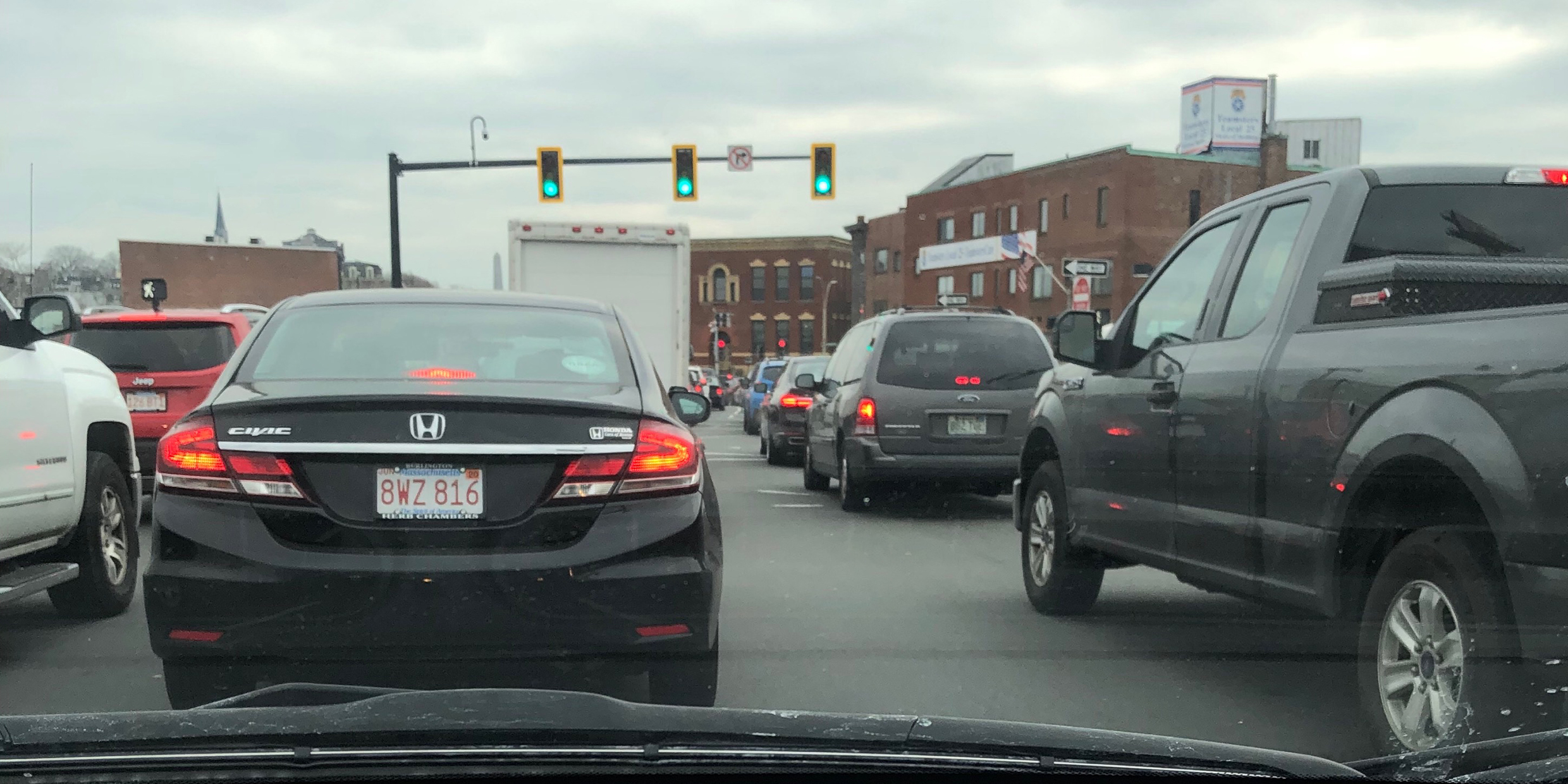Originally published 19 February 1996
The newspaper recently ran a story about a computer traffic model developed by MIT traffic researchers that is being used by the builders of the Central Artery/Third Tunnel project to find trouble spots that may need redesigning.
When the model is running, hundreds of blips of light move about the screen, simulating traffic on the yet-to-be-completed project.
The MIT model is the most sophisticated traffic simulation yet designed, and takes into account such real driver behaviors as running yellow lights, tailgating, and passing in the breakdown lane.
This is not the first attempt to model Boston traffic on a computer. An earlier effort by researchers at Washington Institute of Technology was abandoned when their computer unexpectedly blew up.
To find out what happened, I visited the defunct project’s ex-coordinator, Crash Gordon, at WIT.
“Tell me about the WIT computer traffic model,” I said.
“At the time, it was the best in the country,” responded Gordon. “Funded by a $50 million grant from the Department of Transportation. Used one of the biggest and fastest computers money can buy. Our model took into account many nuances of driver behavior, good and bad.”
“Was it successful?”
“The model worked beautifully in Chicago, Tulsa, Los Angeles. The engineers were ecstatic, highly satisfied. Then we got the contract to do Boston…”
Gordon gazed off into space, in an unfocused sort of way.
I waited, then prodded. “And…?”
He continued: “First we sent observers to Boston to survey traffic patterns. We took psychological profiles of hundreds of typical drivers. We created a mathematical model of the Boston road system and the proposed Central Artery/Third Tunnel. Then we started up the machine.”
“At first, things went well. Traffic moved smoothly along Storrow Drive. The Tobin Bridge handled the required volume. Oh, the computer gave us an occasional backup at the airport side of the old tunnels, but nothing we couldn’t fix by tweaking the project’s design.”
Gordon’s eyes misted. “Then we started plugging in peculiarly Bostonian features…”
“Such as?” I asked.
“Such as rotaries. We didn’t have much experience with rotaries. The computer kept getting hung up. Blips on the screen went round and round, endlessly, as if they couldn’t get on or off. We had to keep turning off the computer and powering it up again. It was all very frustrating.”
He continued: “I knew we were in deep trouble when we added emergency vehicles to the model, which we represented on the screen as flashing orange blips. As an orange blip moved at an accelerated pace through four lanes of traffic, other blips darted in behind, as if they were trying to get the jump on their fellow drivers. I had never seen anything like it before. At first, we thought something was wrong with the computer.”
“Slowly we realized our queuing models were faulty. Queuing in the Boston profile was non-existent. The blips on the screen would use any stratagem to get to the front of the pack: emergency vehicles, breakdown lanes, even sidewalks, for God’s sake.”
“Same for merging lanes. In other parts of the country, drivers in adjacent merging lanes take turns. With the Boston data, blips jammed together bumper to bumper, blocking any blip that wanted to merge.
“Intersections! Blips packed into intersections as traffic lights changed to yellow and red, even if egress was blocked, thereby bringing traffic in all directions to a standstill. We kept getting code-error messages on the screen, but it wasn’t the code…”
Gordon lit up a cigarette. I noticed his hand was shaking.
“Then one of our guys had the idea of adding pedestrians to the model. Big mistake,” he said wearily.
“How’s that?” I asked.
“Well, the model included crosswalks. But the pedestrian blips crossed thoroughfares at random ingress points. We simply didn’t have the memory capacity in our machine to model random ingress.”
“We upgraded memory capacity by 100 gigabytes, then 500. But as we added more features to the model — cyclists, for example — even this wasn’t enough. We could find no algorithm that would concisely specify driver, cyclist, or pedestrian response. It was as if there were no rules.”
He paused. “It was when we added yield signs that the computer blew. Burned out the main processor chips.”
“And that’s when the contract was canceled?” I asked.
“Right,” said Gordon. “But to tell you the truth, none of us at WIT were sorry. We repaired the machine. We now have a contract with Atlanta. Everything is going swimmingly.”
“Well, good luck,” I said.
“You too,” said Gordon. “And give my best to the guys at MIT.”



